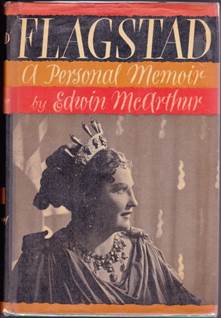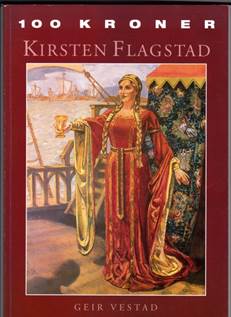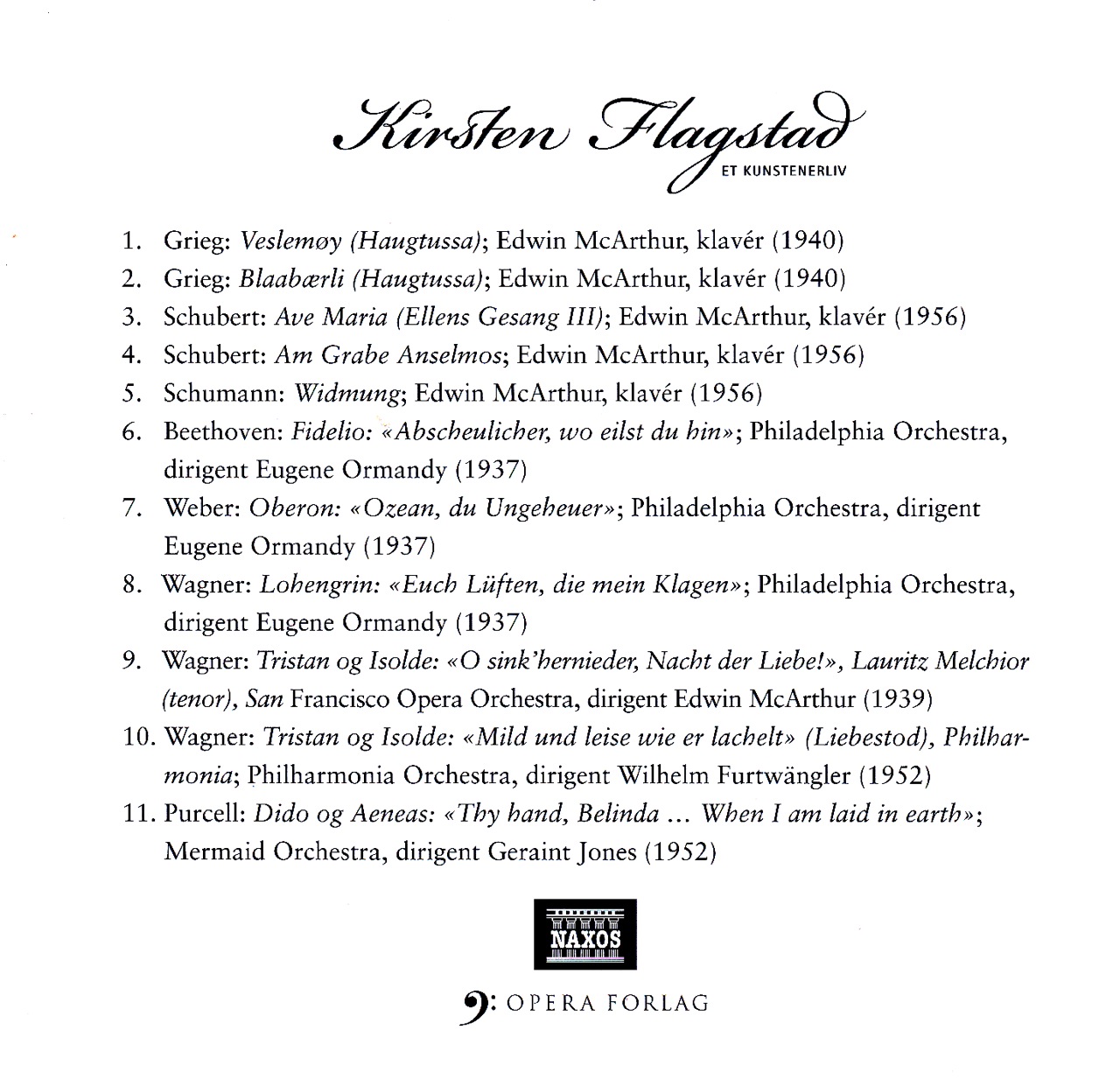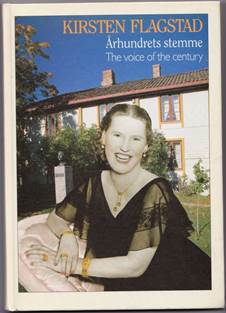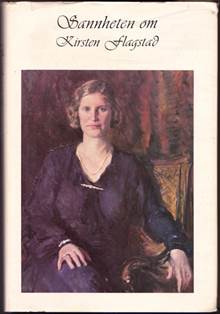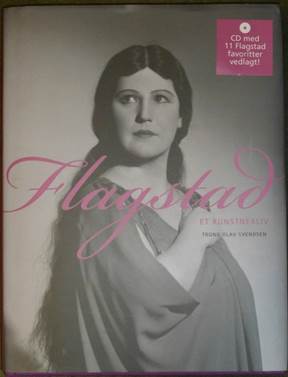
264 pages. 565 Norwegian Kroner
Gravdahl Bokhandel; email: ordre@gravdahl.no
FLAGSTAD ET KUNSTNERLIV by Trond Olav Svendsen

264 pages. 565 Norwegian Kroner
Gravdahl Bokhandel; email: ordre@gravdahl.no
The book can also be ordered through the Kirsten Flagstad museum : : post@kirsten-flagstad.no
-
This Norwegian-language Flagstad volume is a welcome tonic for the legion of her fervent admirers. It is a biography, but it is also a massive photo album with photos on every page. For those of us who cannot read Norwegian there is still much to attract our interest in the photos themselves; even non-Norwegian speakers can decipher the titles, dates, theatres, etc.
This volume was published to coincide with the one hundredth anniversary of Flagstad’s stage debut in 1913, at age 18, as Nuri in d’Albert’s Tiefland. This past June in Oslo and Hamar, Flagstad’s birthplace and site of the Flagstad museum, there were a host of activities celebrating Norway’s pride in giving the world one of the greatest opera singers. These events attracted substantial newspaper coverage in Norway.
The book, quite expensive in overall world costs, but quite reasonable in Norwegian terms, is what we often call coffee-table size, except that it is a tad taller (33cms, 13 inches). When one first lifts up the book, one is surprised that it is not heavier in weight; this is because it is not printed on coated photographic paper, but rather is printed on regular book paper; the hundreds of photos are printed using the offset process, some successfully, others less so. This is the major disappointment in this book for a person such as myself who could only enjoy the huge photo documentation and not engage what looks like an important narrative. I must assume that had the book been printed on more appropriate heavier paper, the cost would have been much more.
I have no idea what the author’s “take” is on the more controversial elements in Flagstad’s story. There is a chronology (eighteen pages, densely spaced) in the rear of the book, but only of her operetta and operatic performances; this is, of course, impressive, as hers is one of the certifiably huge careers ever so documented. But, opera performances were only a part of Flagstad’s amazing career; her concert work in the United States, pre-World War II, and in both Europe and the United States when she resumed her public appearances in 1947, is also enormous. This amazing concert career may be alluded to in the Norwegian text, but it is not illustrated. I think I only saw one photo of her with her American accompanist Edwin MacArthur, and there are only two rather insignificant photos of her husband Henry Johansen who looms large in her complex story. I clearly remember that photo of Johansen and Flagstad on holiday posing with their skis that is prominently included in the Flagstad Manuscript. That photo, to me, was very Norwegian, the skiing thing, but you could also read into their expressions their love.
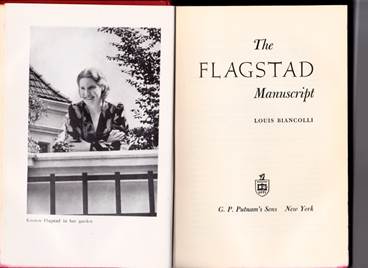 (Flagstad's memoirs edited by Louis Biancoli, 1952)
(Flagstad's memoirs edited by Louis Biancoli, 1952)
Svendsen obviously has made some editorial decisions re the presentation of the photos and there are about a half a dozen that are enlarged to span two pages. I assume he felt that some of the horizontal photos would look more impressive spread out. The photo of Flagstad on the Valkyr rock in the 1938 film The Big Broadcast is indeed impressive, but Flagstad is totally on the left page and four-fifths of the right side page is just rock, sort of a waste of a page. The two-page spread would have definitely helped in the wonderful, horizontal and rare 1913 full-stage photo of a scene from Tiefland; in that photo Flagstad on the very left side of the stage is cropped off, even though the caption mentions her presence.
The book properly starts with a survey of her early life, and there are rare photos of her family, her girlhood years and some of the people who had a significant impact on her life. The last photo of the book is a silhouette of the imposing Flagstad statue outside the new Norske Opera & Ballet Theatre in Oslo. The photos from Flagstad’s international opera career are both a few of the well-known ones and more that are very rare. In my judgment the most amazing photos are of her pre-1935 years, photos of her Aida, Amelia, Tosca, Desdemona, and Magda in Puccini’s La rondine; these are breathtaking, and, of course, the photos of her many operetta roles, some quite over-the-top. Flagstad probably sang almost a thousand operetta performances in her earlier years (I counted 874, and almost 300 operatic performances + numerous concerts). It is amazing to contemplate, that had Flagstad never been heard of outside Scandinavia, objectively, her career would have been considered significant on its own terms.
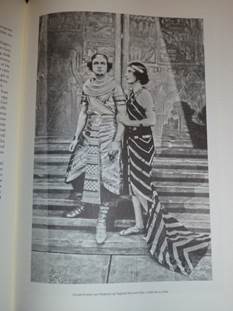
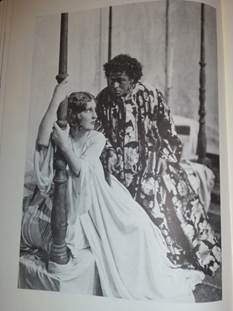
(in Aida with Conrad Arnesen as Radames, as Desdemona opposite Arnesen as Otello)
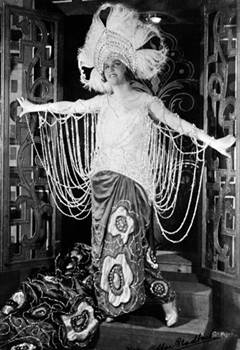
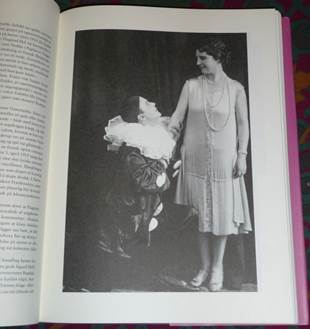
(Flagstad as Delia Gill in Jean Gilbert’s operetta Die Kinokoenigin and as Nedda)
The photo selection, starting in 1935 when she became a world star, avoids wherever possible, the use of the iconic photos known to most opera lovers. (The early Met Isolde holding the chalice, for instance). As a guiding principle, this has some merit, but there must be a balance struck and some of the beloved, familiar photos are missed in a book that aims to tell her story. Svendsen must be justly proud that he has access to never-before, or rarely, seen photos, and the reader is equally justly impressed, but surely there could have been a few more of the historically famous images so that the reader conjures up from his memory the context of her fame. The American section of the book seems a bit haphazard in that the photographs are not presented chronologically. It would have been nice to reproduce the 1935 Time Magazine cover, an honor that was awarded to only the most famous personages.
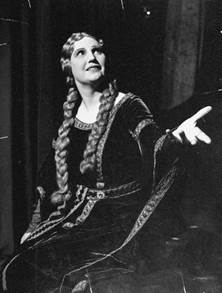
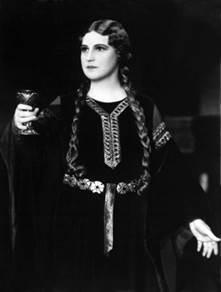
(iconic photos not included in the book)
One can always ask why certain names are included and others excluded, but in such a vast career the author had to make choices. Starting the year of her Met debut there is a photo of the lower Manhattan skyline (period accurate, I believe) aimed, I am sure, to suggest that Flagstad was entering a world totally different from any of her other previous experiences. On the next page there are photos of Otto Kahn and Alexander Kipnis. I can understand wanting to have a Kipnis portrait somewhere in the book, but why Otto Kahn and not Met General Manager Giulio Gatti-Casazza at this point? Both Kipnis and Kahn are usually cited as having spotted her potential greatness many years before the Met debut, but Kahn had died the year before Flagstad came to the Met. Also, there is no photo of Artur Bodanzky, either solo or in a group, even though he conducted the majority of her Met performances and in the summer of 1934 was present at the decisive St. Moritz audition with Gatti-Casazza.
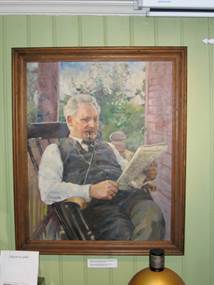
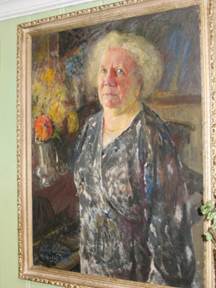
(Flagstad parents, photos taken by Charles Mintzer at the Flagstad museum in Hamar in 2008)
p>
Given, that in our times, with information overload and short attention spans, some people will not be able to engage all the elements of such a seemingly thorough biography. Many people now browse these large books and understandably rely on the photo documentation and captions to summarize a career with possibly just a peek at the chronology. If this is the case, there is much for even the serious Flagstad fan to enjoy. I can heartily recommend this book with the caveats mentioned above.
For those who want to know even more about Flagstad there is an amazing website:
http://www.kirsten-flagstad.no/English/tabid/4221/language/nb-NO/Default.aspx
Click here for a documentary on her life and career
Charles Mintzer
Previously published books on Flagstad + content of the accompanying CD
